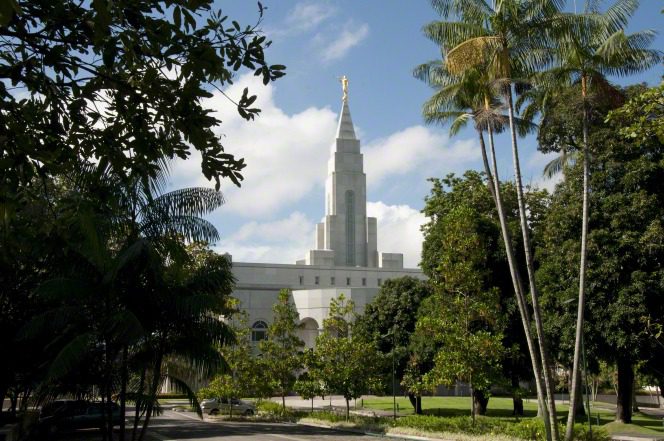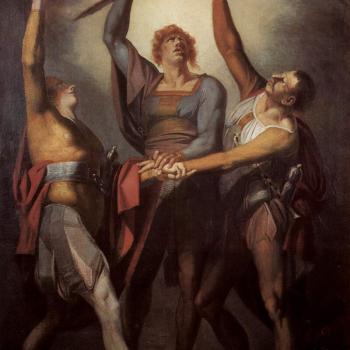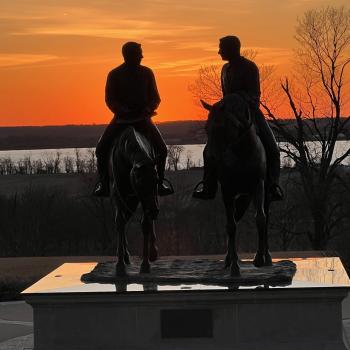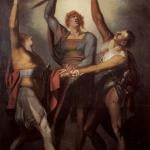
(LDS Media Library)
I’ve just come across a book on my shelf — I have no idea whence it came — written by one Steve Warren and titled Drat! Mythed Again: Second Thoughts on Utah (West Valley City UT: Altair Publishing Company, 1986). There’s some really fun stuff in it. I draw here from quotations given on pages 146-148, in a small section called “The Decline of Mormonism”:
Mormonism was doomed from the start, of course, because of the incompetence of Joseph Smith:
“[Joseph Smith] never could succeed in establishing a system of policy which looked to permanent success in the future.”
Thomas Ford, former governor of Illinois, 1854
And Mormon growth was always illusory, if not altogether a lie:
“The Mormon rulers take great pains to have it believed that their community is continually and rapidly increasing. This, however, is a very great mistake. There has always been a curious state of accumulation and loss going on with them, and the loss is at present probably the largest part of the account. There is no society in the world in which there are so few permanent members, in proportion to the converts originally made. Many of the newborn Saints very soon lose the soda-water enthusiasm which is first experienced, and fall away; many, who have zeal enough to commence the mighty pilgrimage toward the modern Zion, cool off, and lodge like drift-wood by the way. Each emigrating body tapers off, something like the army of Peter the Hermit in the first great crusade. . . . [Mormonism is like] a miniature whirlwind upon a dusty plain [which grows swiftly] until it somewhat suddenly subsides. . . it needs no great degree of prophet-sagacity to foresee its [Mormonism’s] subsidence in like manner.”
Benjamin Ferris, former Secretary of the Utah Territory, 1856
In any event, the Church could never have survived the nineteenth century:
“Once the general detestation and hatred pervading the whole country against the Mormons is given legal countenance and direction, a crusade will start against Utah which will crush out this beast of heresy forever.”
San Francisco Daily Evening Bulletin, 1857
Brigham Young’s passing represented Mormonism’s unmistakable death knell:
“Though it would be rash to assume that Mormonism is dead, it would be equally rash to believe it can survive, for any extended period, the death of its great leader.”
Indianapolis Sentinel, following the death of Brigham Young, 1877
‘The Mormon church was stronger at four o’clock Sunday afternoon than it ever will again become; the remarkable will and organizing force of the dead leader departed with him, and have been transmitted to none other in his church; and we may now watch with complacency, if not with joy, the gradual disintegration of the whole Mormon fabric.”
Salt Lake Tribune, following the death of Brigham Young, 1877
What really guaranteed Mormonism’s doom was modern means of travel and communication:
“The click of the telegraph and the roll of the Overland stage are its [Mormonism’s] death rattle now. The first whistle of the locomotive will sound its requiem; and the pickaxe of the miner will dig its grave.”
Samuel Bowles, editor of the Hartford Times
The immigration of non-Mormons into Utah is what finally destroyed the Church:
“By encouraging the influx of Gentile population . . . in the course of a decade, the Mormon ascendancy would be destroyed . . . and the great octopus, shorn of its political power, would be obliged to assume its proper station among the ranting sects which come and go and are forgotten.”
George Seibel, author of The Mormon Problem, 1899
By the early twentieth century, it was possible for historically-minded people to look back — with a shudder, at course — as the appalling horror that Mormonism had been:
“I think Mormonism is doomed, sooner or later — the sooner the better . . . this foul blot [Mormonism] upon our civilization shall be known only as a horrid night mare of the past — this ‘hideous she monster’ shall retire to the black caverns of hell from which she came. God grant it may be so!”
Reverend Edgar Estes Folk, author of The Mormon Monster, 1900











